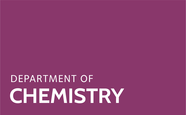By adapting a well-established expository style practical on the topic of chemoselectivity, we present our successful approach to introducing elements of guided inquiry and decision-making to novice undergraduate chemists. Using nitroacetophenone as the polyfunctional substrate, students investigate the effect of using two different classes of reducing agents (reducing metal vs hydride donor). By changing the emphasis of the practical to be investigatory in nature, students actively deduce the outcomes of the different reactions, choosing suitable spectroscopic techniques to establish product identification. This enables students to take greater ownership of their learning, leading to the development of higher-level cognitive skills and improved engagement. While the originally reported NaBH4/EtOH reduction proceeds smoothly, significant issues encountered with product isolation using the Sn/HCl reduction conditions meant that a new alternative was required. We report here the use of Fe/NH4Cl as a superior reagent combination, maintaining complete chemoselectivity but providing numerous other benefits. Comparison between the two reducing metal reductions provides a useful scenario for discussion of sustainability in chemistry. Thin layer chromatography (TLC) reaction monitoring, including analysis of TLC-mass spectrometry data, are new facets to the investigative nature of this part of the practical and allowed students to postulate reduction to the hydroxylamine intermediate.




